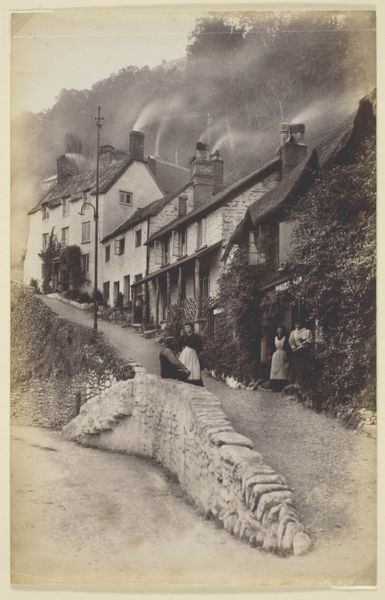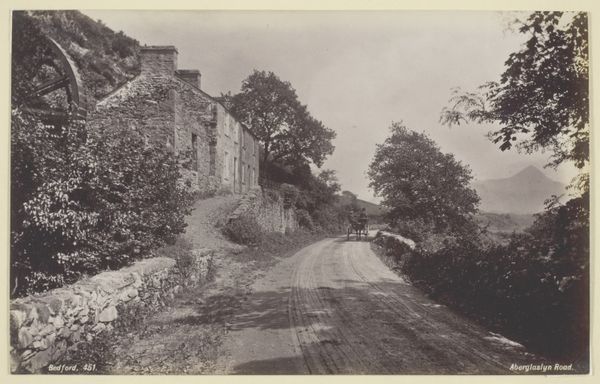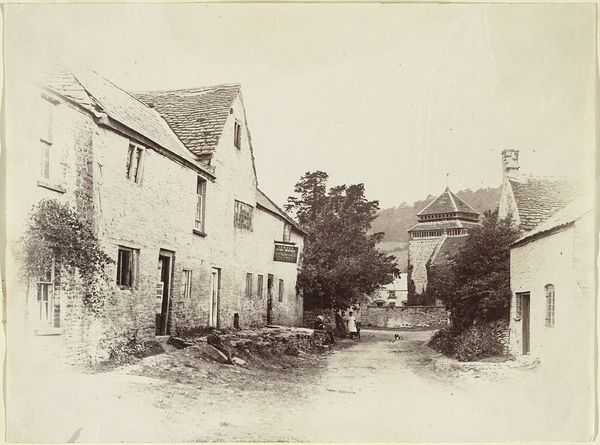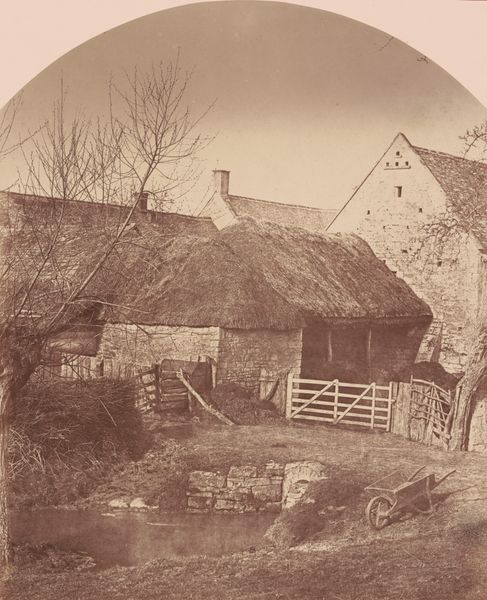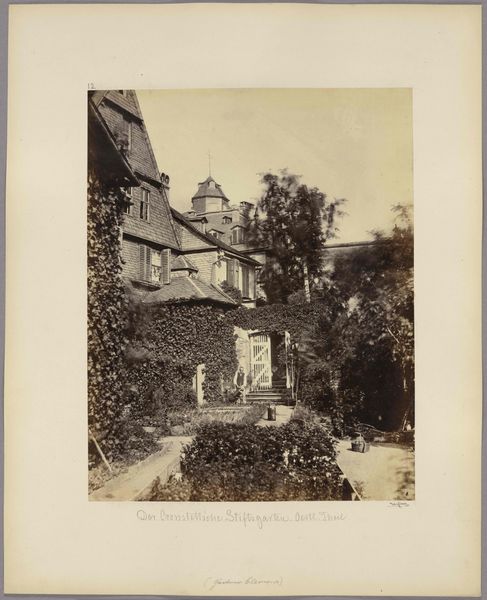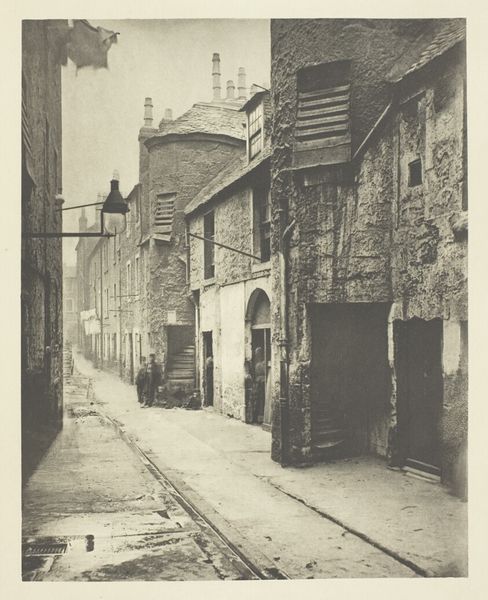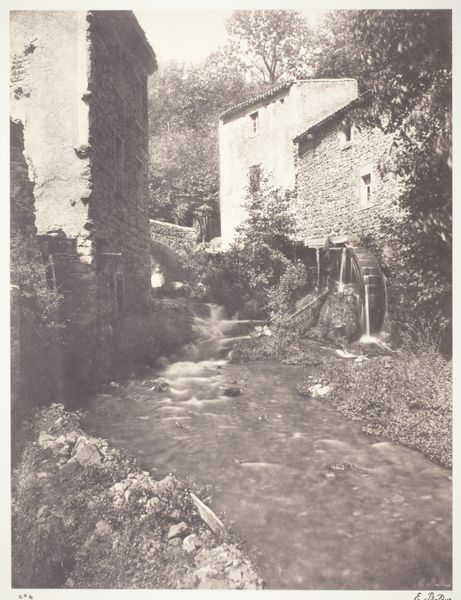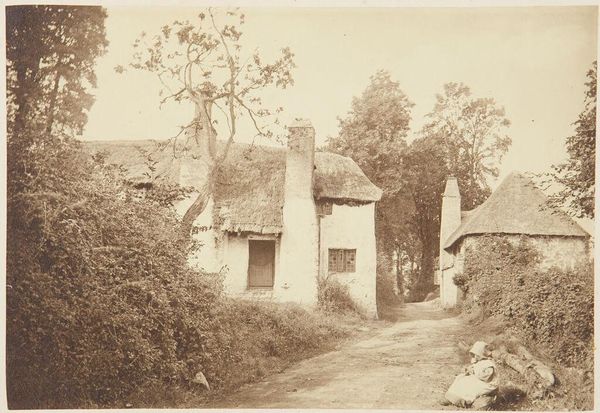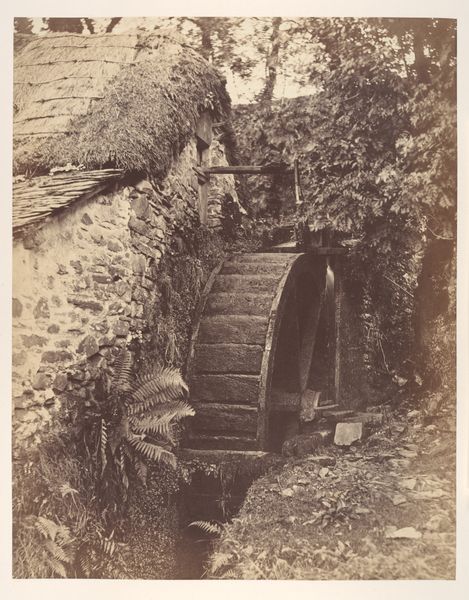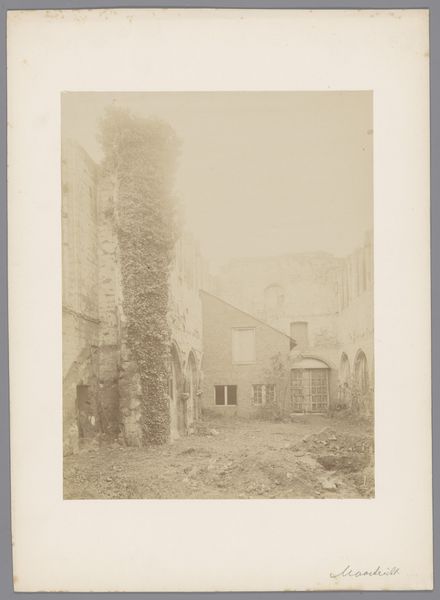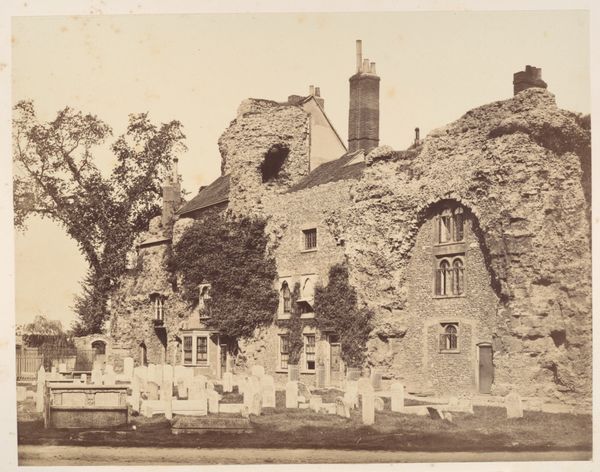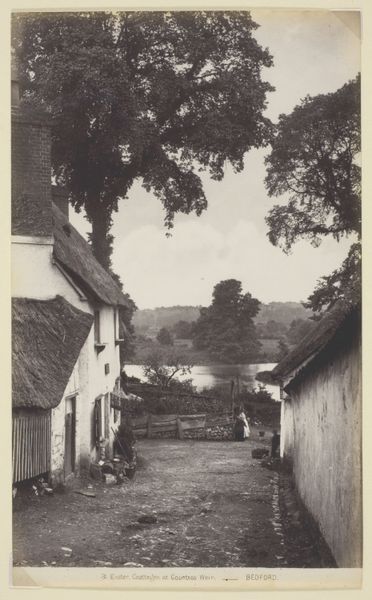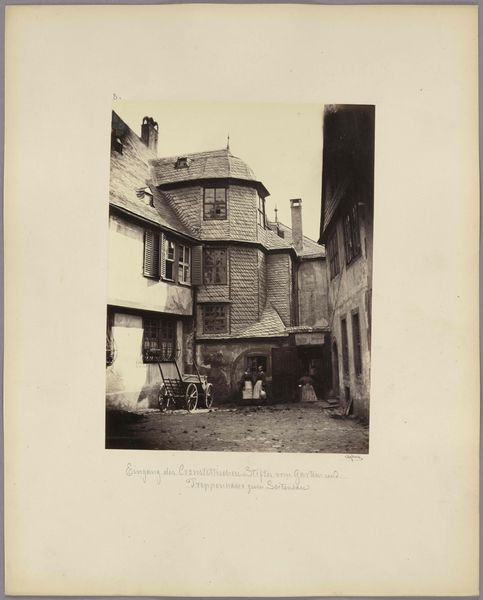
photography, gelatin-silver-print
#
portrait
#
landscape
#
outdoor photograph
#
house
#
outdoor photo
#
outdoor photography
#
street-photography
#
photography
#
mountain
#
gelatin-silver-print
#
men
#
cityscape
#
realism
Copyright: Public Domain
Editor: This photograph, "Old Barmouth," was taken sometime in the 1870s by Francis Bedford. It's a gelatin-silver print. I’m struck by the roughness of the stone contrasted with the implied labor involved in creating the neat roof tiles. What does this image say to you? Curator: Notice how Bedford foregrounds the textures – the roughly hewn stone of the buildings, the precisely laid roof slates, the cobblestone path. These are not merely aesthetic choices, but reflect the material conditions of life in Barmouth at the time. Consider the labor involved in quarrying, transporting, and shaping those materials. Editor: That’s interesting. So, it's less about the picturesque quality of the village and more about the effort put into building it? Curator: Precisely. Look at the way the light falls, highlighting the uneven surfaces. This wasn’t just a pretty landscape; it was a constructed environment, shaped by human activity and the exploitation of natural resources. Who benefited from this work? Editor: I hadn’t considered it that way before. It makes you wonder about the lives of the people who physically built this village. Curator: Exactly. Bedford's choice of photography as a medium is significant here. Photography, a relatively new technology at the time, allowed for a direct, almost unmediated, representation of material reality. He captured the texture of labor. How does understanding the material history impact your initial perception? Editor: It definitely shifts it. It's not just a quaint scene, but a document of a particular way of life, and the hard work it involved. I wonder what Bedford intended us to take away from that. Curator: Perhaps a sense of respect for those who built our world, one stone at a time, but also a critical eye towards the social relations embedded in those very stones. I now consider how our present modes of art consumption might influence, or reflect upon those realities.
Comments
No comments
Be the first to comment and join the conversation on the ultimate creative platform.
